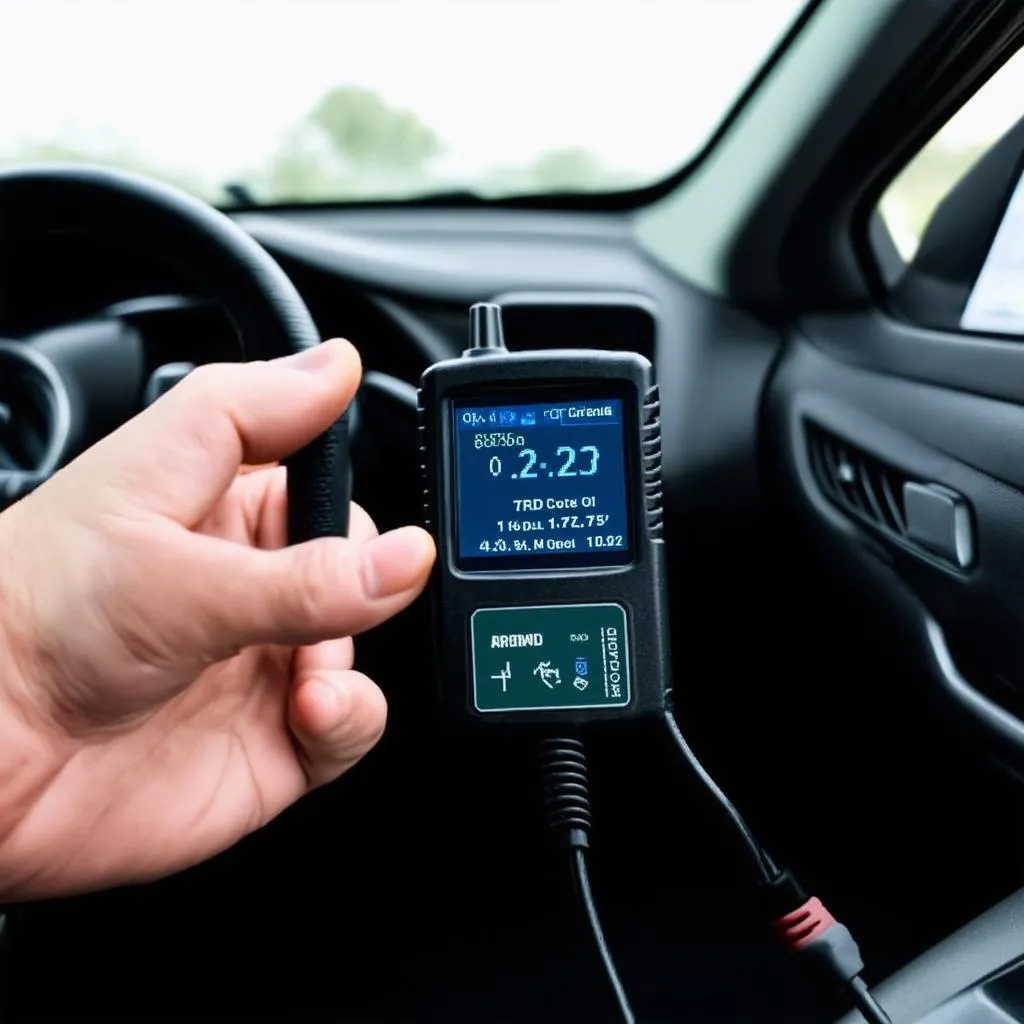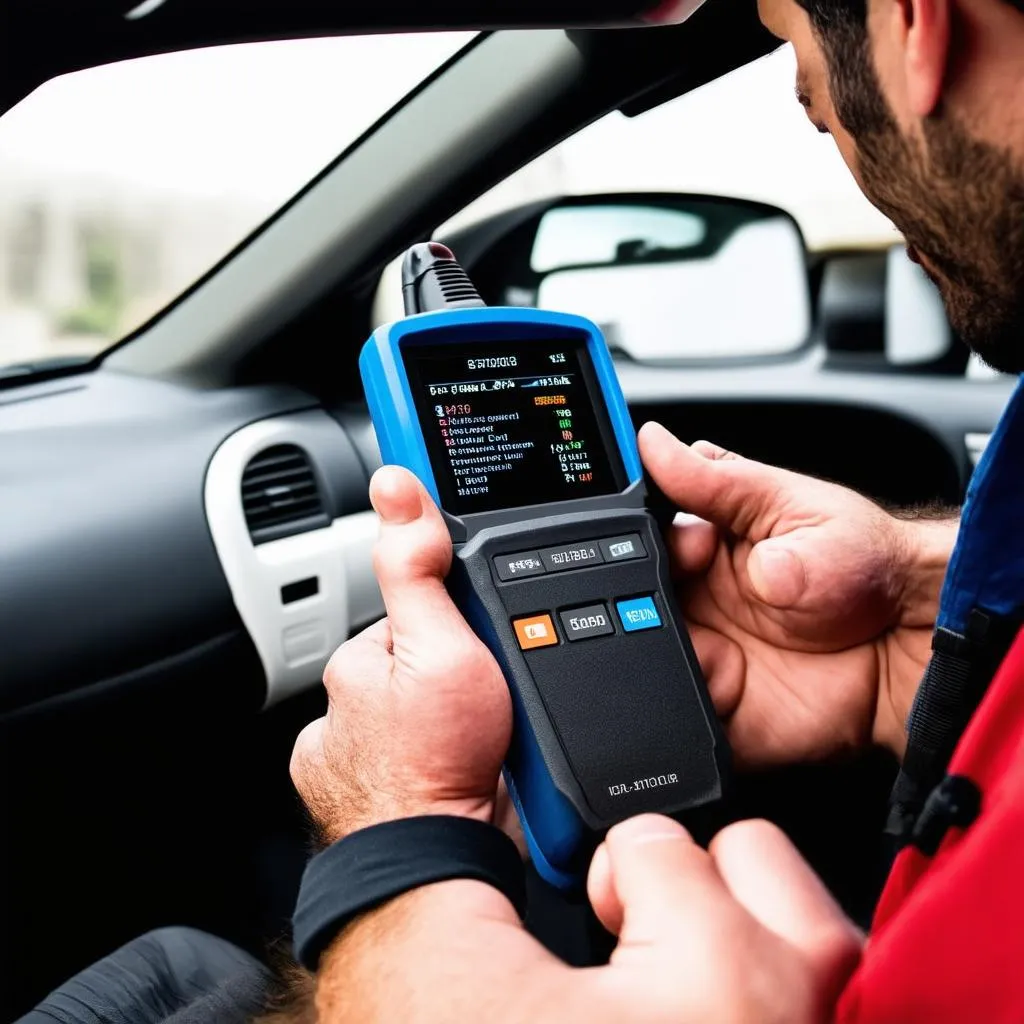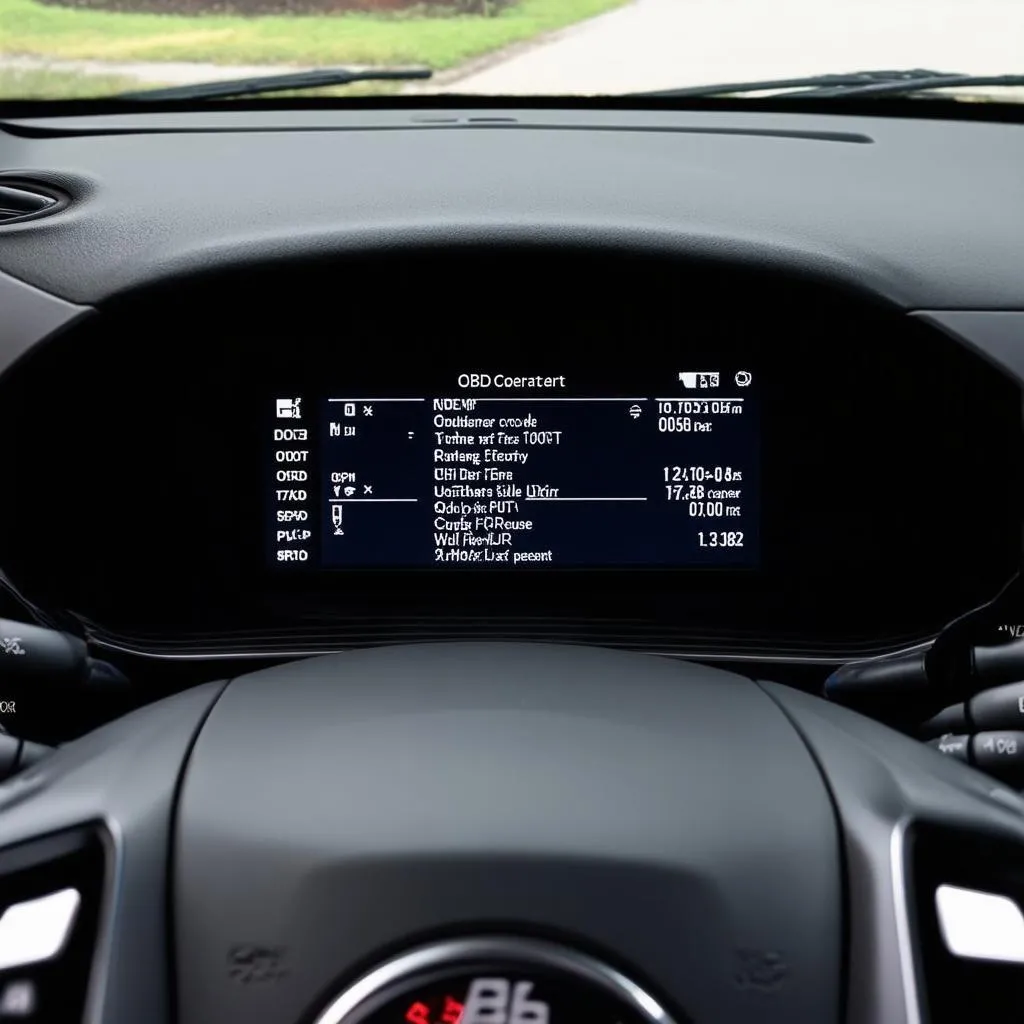“A stitch in time saves nine.” This old proverb applies perfectly to car maintenance. Catching problems early can prevent bigger issues and expensive repairs. And that’s where an OBD code reader comes in.
What is an OBD Code Reader and Why Do You Need One?
An OBD (On-Board Diagnostics) code reader is a handy tool that connects to your car’s computer system to read diagnostic trouble codes (DTCs). Think of it like a doctor for your car, providing insight into any underlying issues.
How to Use an OBD Code Reader: A Step-by-Step Guide
1. Find Your OBD Port:
The OBD port is usually located under the dashboard, often near the steering column. It’s a 16-pin connector, often covered by a rubber flap. If you’re struggling to find it, consult your car’s manual.
2. Connect the OBD Code Reader:
Plug the code reader into the OBD port. Ensure the reader is compatible with your car’s model year and make.
3. Power On and Select the Language:
Turn on the code reader and choose your preferred language.
4. Read Diagnostic Trouble Codes (DTCs):
Follow the prompts on the code reader to read the DTCs. These codes are usually a combination of letters and numbers.
5. Interpret the Codes:
Most code readers will display a description of the code alongside the code itself. For further clarification, refer to the code reader’s manual or a trusted online database like [link to relevant article on techcarusa.com].
6. Clear the Codes (Optional):
Once you’ve addressed the issue causing the code, you can clear the code using the code reader. However, clearing the code doesn’t necessarily resolve the problem.
7. Additional Features:
Many code readers offer additional features such as:
- Live data monitoring: Provides real-time information about your car’s engine parameters.
- Freeze frame data: Captures the conditions under which the code was set.
- Resetting service light: Turns off the service engine light when the issue has been resolved.
Interpreting OBD Codes: A Guide for Beginners
Here’s a brief overview of OBD code categories:
- P-codes: Relate to powertrain issues (engine, transmission, fuel system).
- B-codes: Indicate issues with the body control module.
- C-codes: Refer to chassis issues (ABS, traction control, airbags).
- U-codes: Signal a network communication problem.
Pro Tip: While an OBD code reader is a helpful tool, it’s essential to consult a qualified mechanic for a proper diagnosis and repair.
Common Questions About OBD Code Readers
What is the best OBD code reader for European cars?
Finding a good OBD code reader for European cars can be a bit tricky due to the different protocols used by European manufacturers. For European cars, you should look for a reader that supports the following protocols:
- OBD-II: This is the standard protocol used in North America and most of Europe.
- CAN (Controller Area Network): Many European car manufacturers use the CAN protocol.
For expert advice on choosing an OBD code reader for European cars, you can consult a professional mechanic or review our article on [link to relevant article on techcarusa.com].
Can an OBD code reader reset codes?
Yes, most OBD code readers can reset codes. However, this doesn’t mean the problem is solved.
Remember: Clearing the codes without addressing the underlying issue can lead to recurring problems. It’s always advisable to consult a mechanic for a proper diagnosis and repair.
Can an OBD code reader tell me what’s wrong with my car?
An OBD code reader can identify the problem area by providing diagnostic trouble codes. However, it can’t always tell you the exact cause of the problem.
Think of it like this: If your doctor tells you have a fever, you’ll need further investigation to determine the cause. Similarly, the OBD code reader will provide a starting point for diagnosis.
Does my car have an OBD port?
Most cars manufactured after 1996 (in the US) and 2001 (in Europe) are equipped with an OBD port. If you’re unsure, check your car’s manual or consult a mechanic.
A Word of Caution:
While using an OBD code reader can provide valuable information about your car’s health, it’s important to remember that it’s just a tool. You should always consult a qualified mechanic for a proper diagnosis and repair.
Boost Your Car’s Fortune with OBD Code Reader
In the language of Feng Shui, your car represents your “vehicle of destiny.” Keeping your car healthy is vital for a smooth journey through life. An OBD code reader can help you stay ahead of potential issues and keep your vehicle running smoothly.
Let’s keep your car’s fortune shining bright! If you need help choosing an OBD code reader or need assistance with your car’s diagnostics, feel free to contact us via Whatsapp: +84767531508. Our team of experts is available 24/7 to provide you with the support you need.
 Obd Code Reader in a Car
Obd Code Reader in a Car
 Mechanic Using OBD Code Reader
Mechanic Using OBD Code Reader
 Dashboard with OBD Code Reader
Dashboard with OBD Code Reader